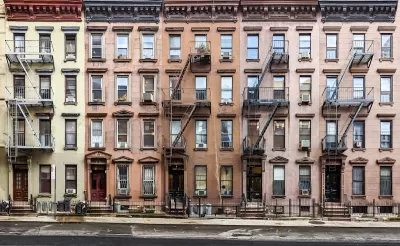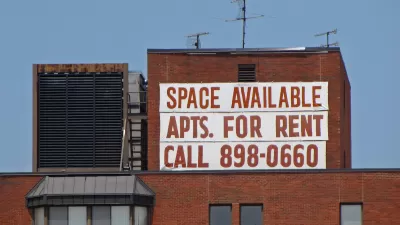Why are most renters required to earn 40 times their rent in annual income?

In a piece for Curbed, Clio Chang probes the origins of New York City’s income requirement for apartment rentals, which typically asks for 40 times the rent in annual income.
“The financial crash of 2008 seemed like a plausible theory, so I started looking at newspaper archives to see if I could find early mentions of the income requirement. After a little poking around, I found a New York Times piece from 1997 in which a broker told the paper that “strict” buildings require up to 50 times the monthly rent while a more “liberal” landlord accepts 40 times.” A tenant lawyer told Chang that the requirement could also be related to the 30 percent figure that most government agencies use as the maximum percentage of their income a household should spend on housing.
Looking further into where the 30 percent rule comes from, Chang found that the concept first came about in the early 1900s, when housing activists called for rents not exceeding 20 percent of family income. “When the Section 8 program started in the 1970s, it was considered standard that households would only pay 25 percent of their income, which under Reagan was later raised to 30 percent, and today, that number pops up in all kinds of housing policies.”
Chang concludes, “A big problem is that rents are simply too high — a recent report found that between 2019 and 2023, median rents rose by 18 percent while incomes grew by just 11.5 percent. Today, a fifth of New Yorkers now pay 50 percent of their income on rent.”
FULL STORY: Who Came Up With Those Rental Income Requirements Anyway?

Planetizen Federal Action Tracker
A weekly monitor of how Trump’s orders and actions are impacting planners and planning in America.

Map: Where Senate Republicans Want to Sell Your Public Lands
For public land advocates, the Senate Republicans’ proposal to sell millions of acres of public land in the West is “the biggest fight of their careers.”

Restaurant Patios Were a Pandemic Win — Why Were They so Hard to Keep?
Social distancing requirements and changes in travel patterns prompted cities to pilot new uses for street and sidewalk space. Then it got complicated.

California Homeless Arrests, Citations Spike After Ruling
An investigation reveals that anti-homeless actions increased up to 500% after Grants Pass v. Johnson — even in cities claiming no policy change.

Albuquerque Route 66 Motels Become Affordable Housing
A $4 million city fund is incentivizing developers to breathe new life into derelict midcentury motels.

DC Area County Eliminates Bus Fares
Montgomery County joins a growing trend of making transit free.
Urban Design for Planners 1: Software Tools
This six-course series explores essential urban design concepts using open source software and equips planners with the tools they need to participate fully in the urban design process.
Planning for Universal Design
Learn the tools for implementing Universal Design in planning regulations.
Heyer Gruel & Associates PA
JM Goldson LLC
Custer County Colorado
City of Camden Redevelopment Agency
City of Astoria
Transportation Research & Education Center (TREC) at Portland State University
Camden Redevelopment Agency
City of Claremont
Municipality of Princeton (NJ)





























